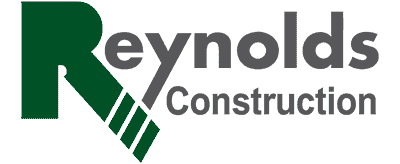Rent a Dumpster in Cloverdale – The Smart Way to Manage Waste
Choose intelligent waste solutions with our dumpster rental in Cloverdale that simplifies project management. Waste Removal USA provides strategic options that keep your worksite organized and efficient while eliminating multiple trips to disposal facilities. Contact our dedicated team today at 540-566-0323 for expert guidance on your specific disposal challenges, or receive an immediate online dumpster rental quote through our convenient reservation platform.
Your Budget Dumpster Solution Starts with Waste Removal USA
- Our value-focused approach eliminates unnecessary costs without compromising essential service quality
- Transparent pricing structure presents complete costs upfront without hidden fees or surprises
- Streamlined scheduling system requires minimal time investment from busy project managers
- Strategic container sizing recommendations prevent paying for capacity your project won’t utilize
Get a Roll-Off Dumpster for Your Business Remodeling Needs
Effective business transformations begin with thoughtful waste management planning. Waste Removal USA delivers strategically positioned containers that establish organized debris removal systems from your project’s first day. Our commercial specialists coordinate delivery timing to coincide perfectly with demolition phases, ensuring immediate disposal capacity without unnecessary rental charges during planning periods.
Dumpster Sizes
*actual dimensions may vary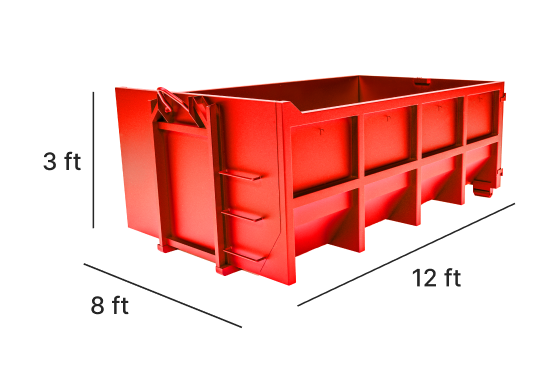
10-YARD DUMPSTER
10 yard dumpsters can hold about 3 pickup truck loads. Great for a spring cleaning like emptying your garage or basement.
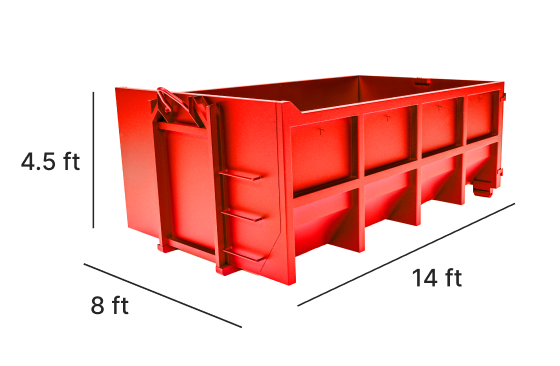
15-YARD DUMPSTER
15 yard dumpsters can hold about 4.5 pickup truck loads. Ideal for slightly larger garage or basement cleanouts.
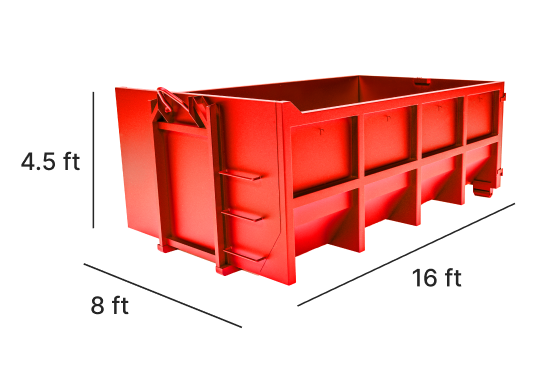
20-YARD DUMPSTER
20 yard dumpsters can hold about 6 pickup truck loads. Great for those remodeling or re-shingling a roof.

30-YARD DUMPSTER
30 yard dumpsters can hold about 9 pickup truck loads. Equipped for medium construction projects.
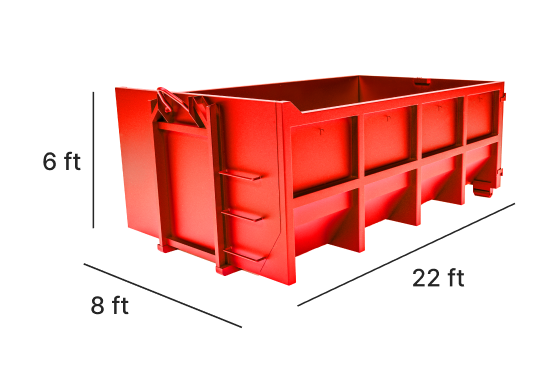
40-YARD DUMPSTER
40 yard dumpsters can hold about 12 pickup truck loads. The largest dumpster great for larger construction projects.
Need a Construction Dumpster in Cloverdale? Get One Delivered Today!
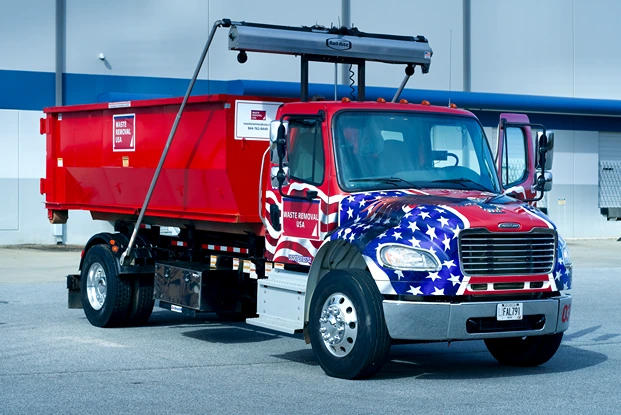
Image Credit: Rebekah Pruett Photography
If you’re looking for a construction roll-off rental for your job site in Cloverdale near Read Mountain Middle School or Read Mountain Preserve, we have the right one for you. Our team will give you the delivery date you need, even if you’re working in Roanoke or Rustburg. Need a dumpster fast? Call 540-566-0323 and get scheduled today.
Keep Your Home Clean & Safe During Renovations with a Dumpster
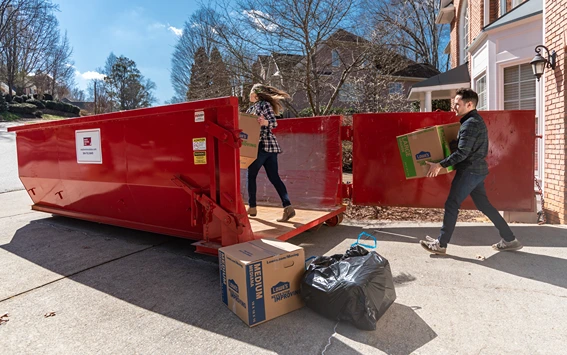
Image Credit: Rebekah Pruett Photography
Waste Removal USA creates defined boundaries between renovation zones and living spaces. Our containers establish clear debris collection points that prevent material migration throughout your home.
We position home dumpsters strategically to maintain emergency exits and essential pathways during disruptive renovation phases. Customers appreciate our clean, well-maintained containers that securely contain dust-producing materials that would otherwise compromise indoor air quality during extended projects.
The Best Roll-Off Dumpster for Cloverdale Home Renovations
Cloverdale residents rely on Waste Removal USA for superior waste management tailored to local property needs. Our dumpsters come in various sizes including 10-yard, 20-yard, and 30-yard options to accommodate any project scope. Contact our Cloverdale specialists today at 540-566-0323 to discuss your specific renovation timeline, email project details to sales@wasteremovalusa.com for personalized container recommendations, or secure your ideal dumpster through our simple reservation system designed specifically for Cloverdale property improvements.
Dumpster Rental Options at Waste Removal USA
Give us a call and we will set you up with the right dumpster for the job in your local area
Residential
Residential roll off dumpsters are great for household clean outs or clean-ups, yard debris removal and general junk removal.
Construction
Roll off dumpsters for residential & commercial construction debris are perfect for any home renovation job.
Yard Waste
If you are doing yardwork and need a roll off container for yard waste in & around your local area, we have you covered.
Concrete
Order a 10 yard or 20 yard roll off dumpsters for either "clean" concrete or "clean" dirt loads.
Roofing
Just as the name implies, roofing dumpster rentals are used for shingles and sheathing only.
Dumpster Size Comparison
|
Size |
Typical Dumpster Dimensions |
Estimated Capacity* |
|---|---|---|
|
14' long x 8' wide x 3.5' high |
3 pickup truck loads |
|
|
16' long x 8' wide x 4' high |
4.5 pickup truck loads |
|
|
20' long x 8' wide x 4' high |
6 pickup truck loads |
|
|
22' long x 8' wide x 6' high |
9 pickup truck loads |
|
|
22' long x 8' wide x 8' high |
12 pickup truck loads |
Read What Our Customers Are Saying
Frequently Asked Questions About Dumpster Sizes in Cloverdale, VA
Can basement drywall be put in with personal items?
No, mixing drywall with personal items creates problematic disposal conditions, as gypsum components potentially damage non-construction materials through both physical and chemical interactions. The abrasive nature of broken drywall edges frequently damages personal items through tearing and scratching, while moisture-activated chemical reactions potentially transfer residual compounds to adjacent materials causing discoloration and degradation.
Most disposal service providers recommend material segregation, maintaining separate containers for construction materials versus household items when disposing of both simultaneously. This separation approach prevents cross-contamination while optimizing recycling potential, as mixed loads typically default to general landfill placement rather than specialized processing streams potentially capturing recoverable components from either category independently.
What's the best dumpster option for tenant move-out days?
Mid-sized containers (10-15 yards) provide optimal balance between capacity and placement flexibility for standard tenant transitions, accommodating typical household waste volumes while fitting within parking space constraints common in multi-unit residential environments. These intermediate options accommodate approximately 3-5 standard apartment contents excluding furniture, with processing capacity for predominately lightweight materials common during residential transitions.
For scheduled community-wide move-out events common in academic housing environments, multiple strategically placed containers typically outperform single larger units, creating distributed disposal access reducing congestion around limited disposal points. This distributed approach improves logistics while maintaining adequate capacity for synchronized departure schedules, with container spacing of approximately 150-200 feet creating optimal accessibility balancing walking distance against placement requirements.
Can I dispose of both old shingles and roofing felt?
Yes, shingles and underlayment materials create compatible combined disposal streams suitable for standard construction containers, with industry practice specifically accommodating these associated components as integrated disposal packages. This combined approach improves operational efficiency through eliminated sorting requirements while maintaining appropriate disposal channel selection for petroleum-containing roofing materials.
Mixed material loads containing both components improve container performance through complementary characteristics, with dense shingle materials providing stable base layers while lighter felt components fill irregular spaces between rigid materials. This integration creates optimal loading density while preventing material settlement during transportation potentially creating weight distribution challenges with homogeneous loads consisting exclusively of either component individually.
Are garbage disposals and sinks allowed in remodel dumpsters?
Yes, kitchen fixtures including disposal units, sinks, and associated plumbing components qualify as acceptable materials in standard construction containers, requiring minimal preparation beyond basic drainage and disconnection from electrical supplies. These components represent standard construction waste rather than specialized processing categories, despite containing multiple material types within integrated assemblies.
Preparation requirements focus primarily on contaminant removal rather than disassembly, with disposal units requiring removal of standing water and food particles preventing odor development during storage periods. While technically acceptable without disassembly, separating metal components (particularly stainless steel sinks) potentially creates recoverable scrap value through separate processing channels when quantities justify additional handling requirements.
Should I remove nails before tossing old fences?
No, standard disposal practices accommodate fasteners as integrated components of wooden fence materials without requiring comprehensive removal processes beyond basic safety considerations. This integrated approach improves operational efficiency through eliminated sorting requirements while maintaining appropriate volume-to-weight relationships supporting container performance metrics.
Primary safety considerations focus on protruding rather than embedded fasteners, with hammer-flattening sufficient for extending nail points preventing injury potential during handling operations. This minimal preparation approach prevents unnecessary labor investment while maintaining safety protocols, with embedded fasteners presenting minimal hazard potential during processing operations specifically designed for construction materials containing standard fastening components.
Can I dispose of treated deck lumber in a roll-off bin?
Yes, modern pressure-treated lumber (manufactured after 2004) qualifies for standard construction waste disposal despite preservative content, reflecting industry-wide formula modifications replacing previous copper-chromium-arsenic (CCA) compounds with less toxic alternatives. These newer formulations contain primarily copper-based preservatives qualifying for regular disposal channels without specialized handling requirements or supplemental processing fees.
While acceptable for disposal, preserved lumber maintains substantial recovered value through reuse channels when in serviceable condition, with marketplace platforms connecting renovation projects with material reuse opportunities. This recovery approach provides superior environmental performance compared to disposal regardless of chemical classification, while potentially generating economic benefits through eliminated disposal costs frequently exceeding the value of recovered materials themselves.
Find Location
Preparing for Dumpster Delivery
Our Service Area in Cloverdale
Customer Reviews
Hours
Monday - Friday8:00AM - 6:00PM





